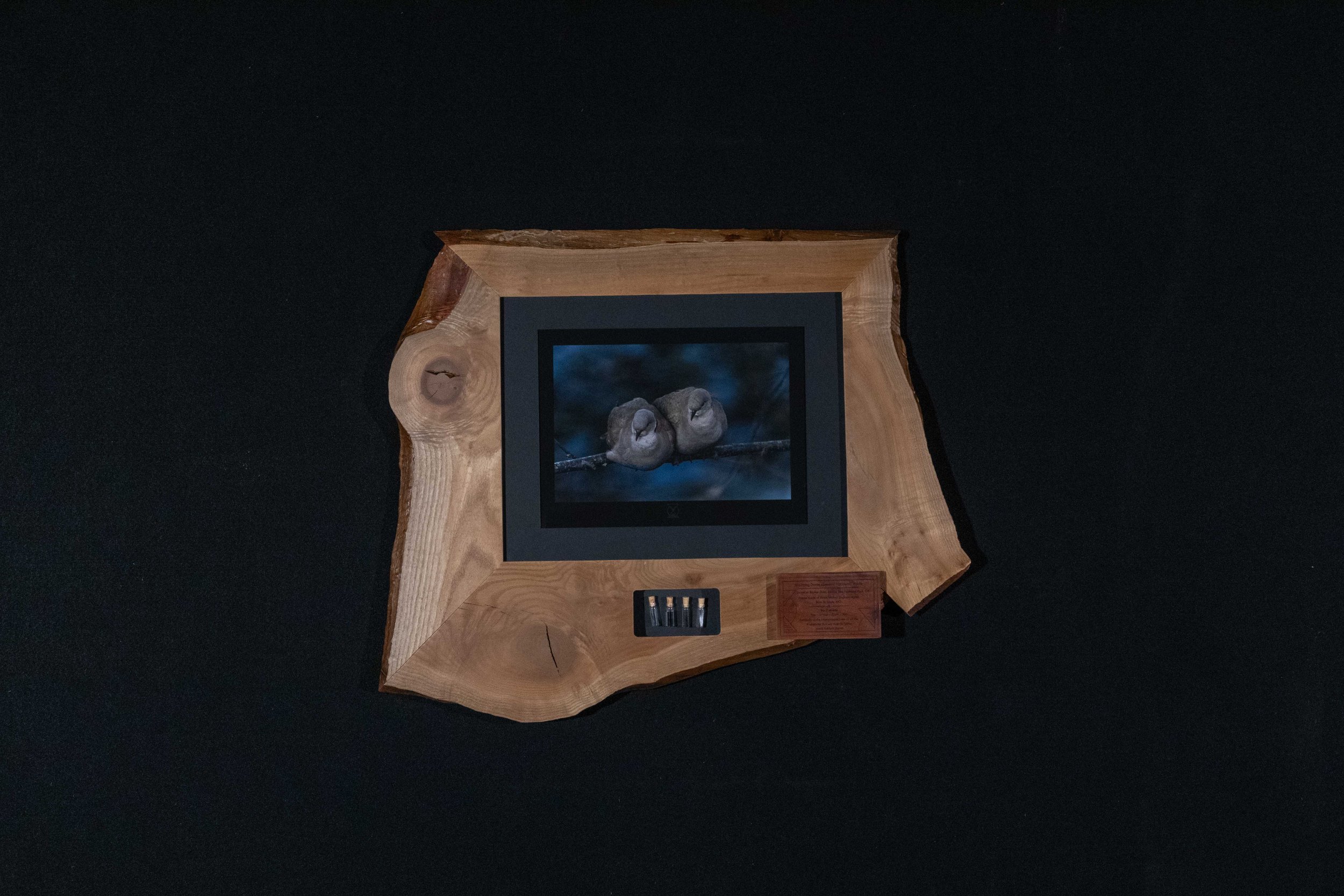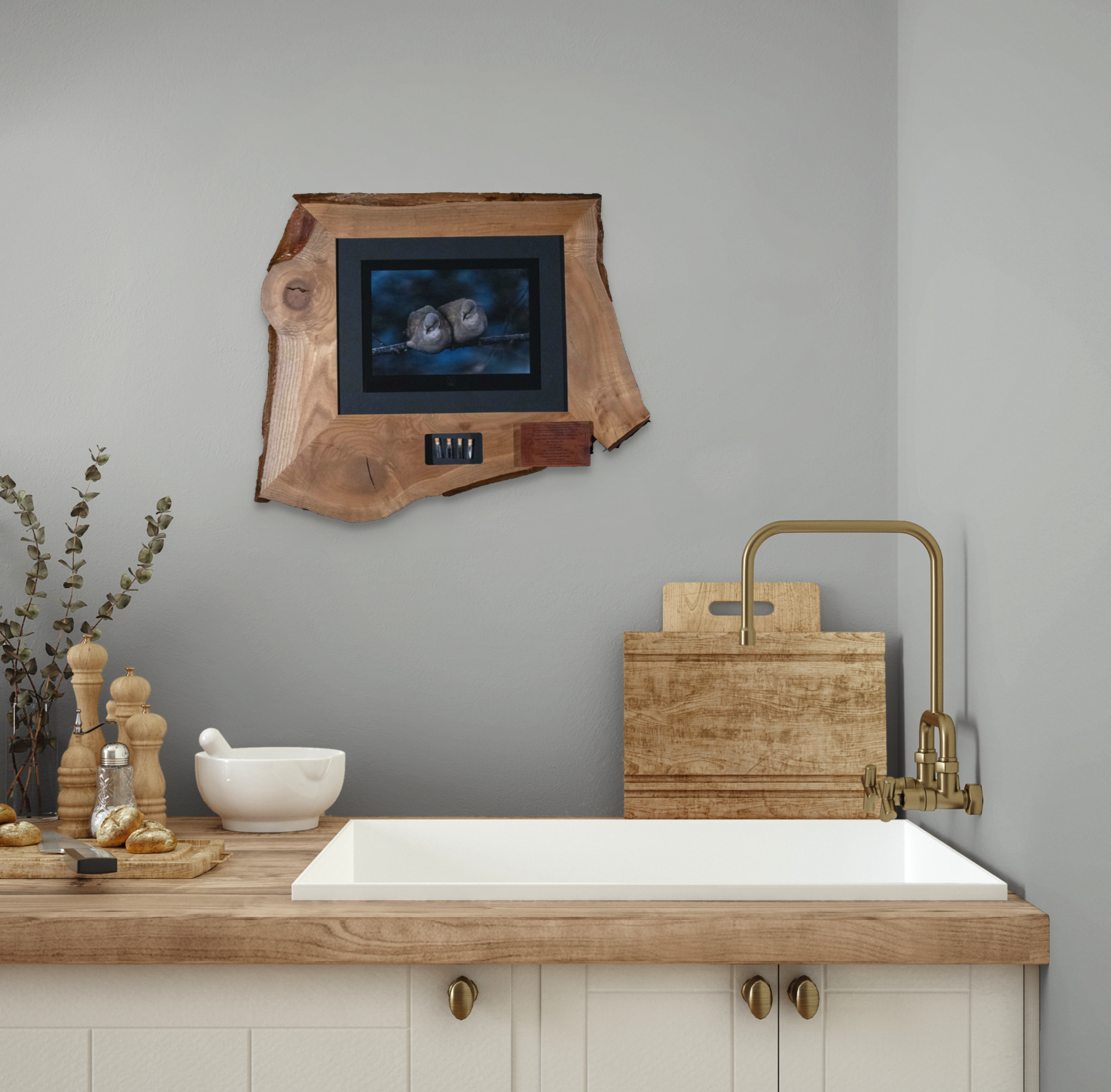Mourning Doves - Wakodahatchee Wetlands, Boynton Beach, FL




Mourning Doves - Wakodahatchee Wetlands, Boynton Beach, FL
Mourning Doves (Zenaida macroura), Adults
Leaving the wetlands this day I spotted this couple snuggling on a branch below the boardwalk. The background in the water below them. This photo was taken 2/8/23 at 5:02 pm.
WeForest Donation: $220 (What is this?)
Print Number: 1/3
Print Size: 8 x 12
Total Dimensions: 25 x 30
Hanging equipment and certificate of authenticity included.
photogrpah
Mourning Doves (Zenaida macroura)
Prevalent year-round in nearly every of the lower 48 states, the cooing Mourning Dove is well known to many. They are frequent visitors to bird feeders and backyards, often eating the seeds on the ground that have fallen out of feeders. They are susceptible to neighborhood cats due to this except when they are perching on fences and telephone wires as they tend to. They are usually seen alone or as a couple, but during breeding season you might even see groups of three flying close together. This is actually a common social display in which the lead bird in the male of a mated pair, the second bird is a male rival, and the third bird is the female of the couple.
Mourning Doves eat up to 20% of their body weight a day, maybe contributing to being the most abundant and highest hunted bird in North America. Yearly, hunters kill around 20 million Mourning Doves, not remotely risking a detrimental result on the population of more that 350 million. In addition, the ones that escape hunters year after year can live a relatively long time. The oldest known Morning Dove was banded in 1968 and was shot by a hunter 30 years later in 1998.
LOCATION
The Wakodahatchee Wetlands
The Wakodahatchee Wetlands park is located in Delray Beach. It spans across a 50 acre lot, with a three-quarter mile boardwalk that includes multiple gazebos, benches, and informational signage. There are open ponds, marshy areas, mangrove islands for roosting, as well as a wooded area.
Formerly utility land, the wetlands were developed as a natural means of managing wastewater. Palm Beach County’s Water Reclamation Facility pumps around two million gallons of water into the park daily. This water is treated, yet still contains excess mineral content for public use. Here in the wetlands the water is naturally purified by the flora of the park and released back into the surface water supply.
Every visit, I see so much life and have yet to be disappointed. Over 150 species of birds have been spotted here as well as turtles, rabbits, and alligators. In the Spring you can see large numbers of roosting Wood Storks with their young as well as many young Snowy and Reddish Egrets, and Tricolored Herons, stumbling about in the tops of red mangroves. Anhingas are ever present, diving for fish or sunbathing atop a perch, wings outstretched. Red-winged Blackbirds chase each other through the tops of tall grasses while Swamp Hens and Gallinules weave through their stems, probing for their next meal.
The Frame
Black Walnut
A desired wood for its dark, rich color and relative ease to work with, the Black Walnut tree grows in most of the Eastern United States. Walnut trees are cultivated for their nuts of course as well, although their production is irregular with great variation of crop size from year to year.
THE ELEMENTS
Fire, Water, Earth, and Air
In the display case in the bottom of the frame, four items are preserved glass vials. The items represent the elements: fire (wood charcoal), water (mineral oil), earth (soil), and air (a milkweed seed). I include these items in my work as a symbol of the interconnectedness of all life on earth, and as a reminder that humans must do better.
THE PLAQUE
I engrave a wooden information plaque for each work. The plaque includes what the photograph is of, the location of the photograph, what type of wood the frame is made of and where I got the wood from. The plaques also explain what the vials are in each display case, and even state the meaning of my logo. The plaques are attached magnetically and can be removed to read or to store on the back of each frame if you prefer not to have it displayed on the front.

